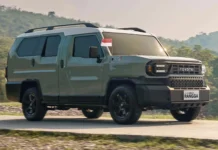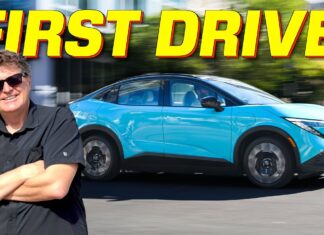Welcome back to our discussion of engines that are ready for retirement. Last week, we looked at a number of import engines which are getting to be somewhat long in the tooth, so this week we will look at some domestic engines that could use a refresh. You all were quite active in the comments section, and I thank you for your discussion.
Before I get started on the domestics, I would like to bring up a point made in the comments section on the last article. That is the fact that, in many cases, older engines tend to be a bit more reliable than modern engines. This is an excellent point. Especially with something like that Subaru flat-four, older engines are still around in many instances, because they are so reliable, and have proven that they can handle some tough jobs. However, in doing this, they may miss out on some of the benefits that modern engines provide.
Most important with engines in my book is fuel economy. We as automotive enthusiasts must face the reality that the automotive world needs to make efforts to reduce fuel consumption if we want to continue using gasoline powered vehicles. I am making this list, not as an attempt to defame older engine platforms, but as an attempt to provide you as consumers with information to help you make an informed decision when buying a new vehicle. If economy is your game, and reliability is less of a concern, then you may want to stay away from the engines on this list. Regardless of your opinion on this debate, I again welcome discussion in the comments, it is always nice to hear another viewpoint!
OK, now that I have that out of the way…
Onto the list!
Again, this is in no particular order, the numbers are there for the sake of organization.
5. Ford Cyclone V6
First up is this Ford Cyclone V6. Making its debut in 2011, this 3.7L engine makes 300 horsepower and 280 lb-ft of torque. Most notably, this engine has been the powerplant of the Ford Mustang for quite some time. However, with the introduction of the EcoBoost 4-cylinder, and the even more exciting V8, I don’t know exactly why one would choose the V6 anymore. With the EcoBoost’s modability and the V8’s fantastic noise and power, I don’t see much reason to choose the V6 anymore.
4. Chrysler Pentastar V6 (G Variant)
Up next is another motor from 2011. This V6 featured on a number of Fiat-Chrysler vehicles is a 3.6L which makes 305 horsepower and 269 lb-ft of torque (this might differ from model to model). What do I mean by “a number of FCA vehicles”? Basically, every FCA vehicle with a longitudinally-mounted V6 has had this engine. This includes the Dodge Challenger and Charger, Chrysler 300, Jeep Wrangler, Dodge Durango, Jeep Grand Cherokee, and the Ram 1500. This engine has withstood the test of time, but ultimately, there are much better engine options, even within Fiat-Chrysler.
3. Chevy LLT V6

This Chevy V6 was originally sold in 2009. With a displacement of 3.6L, the LLT was able to crank out 288 horsepower and 270 lb-ft of torque. You can still get this engine on the Buick Enclave and the Chevy Traverse. While this engine is direct injected, anything from 2009 is just not going to offer the same economy as a more modern engine.
2. FCA HEMI V8
At the number 2 spot, we have a 5.7L HEMI V8. This particular HEMI engine was originally introduced in 2009 and makes 383 horsepower and 400 lb-ft of torque. It is only available on the Ram 2500. Again this is just a case of there being more modern options available. EDITOR’S NOTE: The 5.7-liter HEMI is also available on the Dodge Charger, Challenger and Durango, the Chrysler 300 and the Jeep Grand Cherokee.
1. Volvo Modular T5
Last on the list is technically not a domestic engine. However it was used in a number of Ford Vehicles, and was produced when Ford owned Volvo, so I’m going to count it anyways. This is by far the oldest engine in part 2. Originally debuted in 1997, the 2.5L straight-five engine has gone through a few updates over the years.
Ultimately though, it is still the same block as the 1997 car. In its most recent form it makes 247 horsepower and 266 lb-ft of torque in the Volvo S60. However, it was the powerplant behind the last generation Ford Focus RS (only available in Europe) and it also powered the V70R Swedish Sleeper Wagon. All in all, this engine has had a lengthy and storied life, but with Volvo’s latest engine offering, I think it may be best to say goodbye to the quirky old 5-cylinder.
Thanks again for reading! I look forward to reading your comments about these aging engines.
Engines aren’t the only way in which cars can show their age. Technology features also offer a unique way to see a car’s age. If you’re looking for something with the latest and greatest technology, why not watch this video about Audi’s new stoplight detection system:





























